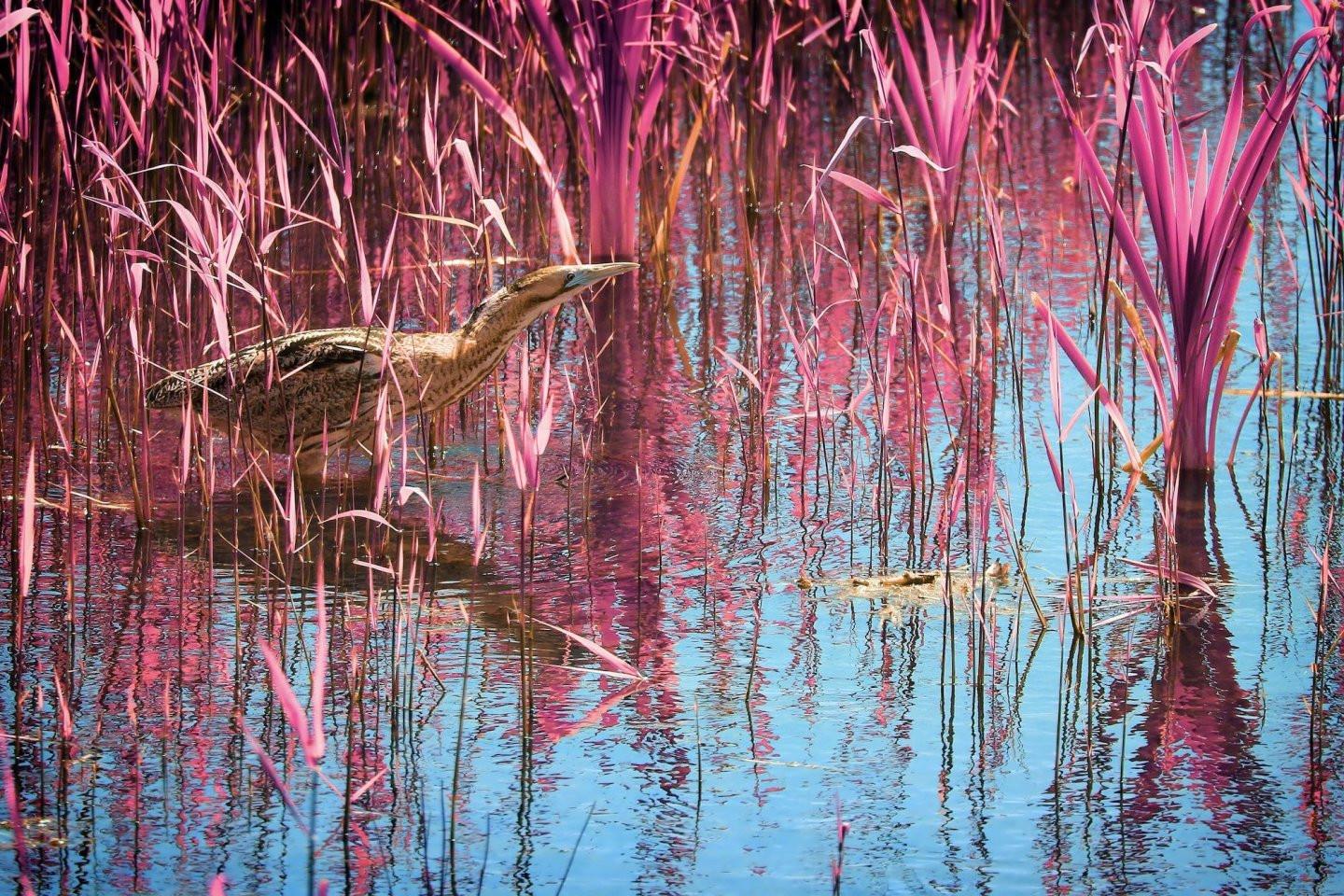
De Zegge (Geel, Belgium)
Endangered species: the Eurasian bittern
The nature reserve De Zegge is a vulnerable paradise for rare species of flora and fauna and one of the very few places in Belgium to contain a unique marsh habitat with peatlands. A bog like this is so important because it retains carbon, thus serving as a beacon in the battle against global warming.

Why De Zegge?
De Zegge is, however, under tremendous pressure because its water balance has come under threat. According to AZF, this needs to change. The Foundation aims to combat the desiccation of this area to create a safe habitat for various animals such as the Eurasian bittern, the brown harrier, the spotted crake, the grass snake, and the Eurasian water shrew. AZF also aims to work towards a harmonious future for people, animals, and nature – not only abroad, but also in its own country.


The restoration of paradise in de Zegge
1. HOTSPOT:
The nature reserve De Zegge in Geel covers 120 hectares. This hotspot is a paradise for birds, for whom this marshland is a perfect biotope. The corridors with their low vegetation make for efficient hunting, while its diversity ensures an abundance of prey. In 2021, AZF allocated an area covering 3.8 hectares specifically to the Eurasian bittern. Storks and other rare varieties of birds have also made this nature reserve their home.

2. LIVING LANDSCAPE:
Not only the nature reserve is of crucial importance to the conservation of the indigenous flora and fauna; the surrounding agricultural land also has a significant impact on this marshland area – and vice versa. Because farmers in the periphery of this area pump the ground water up to the surface to drain their land, the marshland is being threatened with drought.
3. LAND USE:
In collaboration with the government, AZF restore the wetlands in the periphery of De Zegge to give this unique reserve every chance of long-term survival. In the short term, AZF is working to preserve the existing marshland by managing the eco-hydrology to the best of its abilities. This means that it will manage and optimise the way in which water is pumped, moved, used, and consumed in De Zegge. In the long term, AZF wants to convince the farmers in the vicinity of De Zegge to adapt their cultivation methods in such a way to reduce the pressure on the area. AZF is encouraging them to focus on crops that can be grown successfully in wet conditions. This way, their fields can remain partially flooded and they will not have to drain them as profusely. By doing this, AZF wants to sustainably promote the coexistence of the nature reserve and agriculture in the periphery. This is the only way to save De Zegge, the hotspot, from desiccation.
4. FEED IN THE MUD:

The AZF team, composed of four employees who are passionate about what they do, dedicates itself to the preservation of this beautiful piece of valuable nature day in day out.
5. COHABITATION:
It is of crucial importance that the various parties located in and around De Zegge cooperate with one another to safeguard the availability of enough water in this marshland area. Countless people are making a concerted effort to achieve this on a strategic and practical level.
- If farmers stop draining the land and adapt their crops to make them better suited to the former marshland, De Zegge will be able to retain enough groundwater. This will enable the nature reserve to harmoniously coexist with humankind and agricultural activity.
- Various authorities, both local and supra-local, are working to reallocate the landscape of which De Zegge is a part. Traditional agricultural activities are being reoriented. In some cases, the government is even choosing to buy the land from farmers so that they can relocate their agricultural activities. This will enable the land around De Zegge to be returned to nature.
- Local residents also contribute to the preservation and management of De Zegge. Their sheep or cows graze in De Zegge, for example. Together with sympathisers from all over Flanders, they volunteer to carry out management work together with the AZF staff. They are working shoulder to shoulder to manually maintain the watercourses, the wood edges, the hay meadows, the reed beds, and much more.
We believe that economic activities should never be at the expense of the environment. On the basis of a ‘this and that’ rather than a ‘this or that’ precept.
6. FUTURE-PROOFING:
Thanks to the concerted efforts taking place today, De Zegge is evolving into a valuable water reservoir and a permanent, harmonious paradise for rare plants and breeding birds. More nature, greater biodiversity, and a sustainable balance for current and future generations – that is what AZF aims to achieve here.


'Back to Buta' Okapi (Congo)
Our story starts with the arrival of the first okapi at Antwerp ZOO in 1919. The animal was named ‘Buta’ after the capital of the Province of Bas-Uélé, where the okapi occurs in the wild. This is why both the location and the species are so meaningful to the Antwerp Zoo Foundation. AZF wants to give this elegant and mysterious species a safe, permanent home.

Lomako Bonobo (Congo)
Humankind shares 98 per cent of its DNA with the bonobo. Keeping this in mind, it should hardly come as a surprise that AZF takes such a heart-felt interest in the fortune of this intelligent primate. The situation as it stands today unfortunately looks everything but rosy: deforestation and the bush meat trade pose a substantial threat to the very survival of these inspiring animals and their habitat. AZF is doing everything in its power to improve the lives of bonobos.
